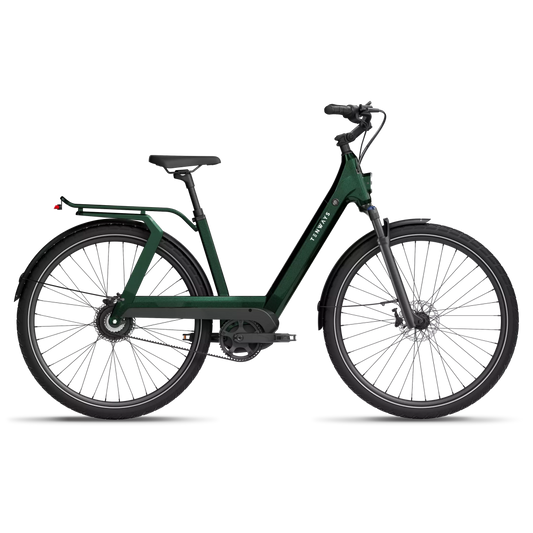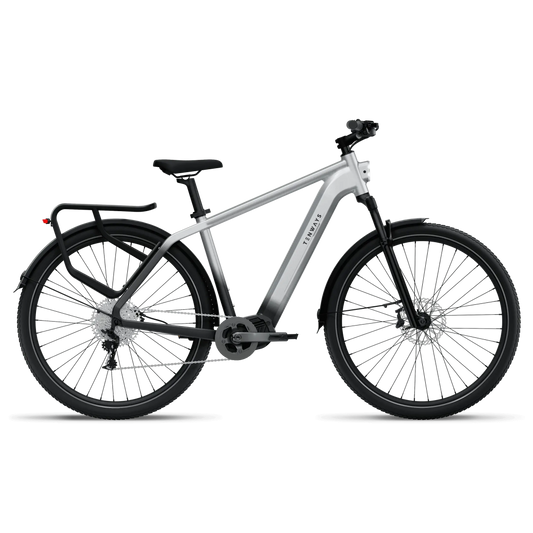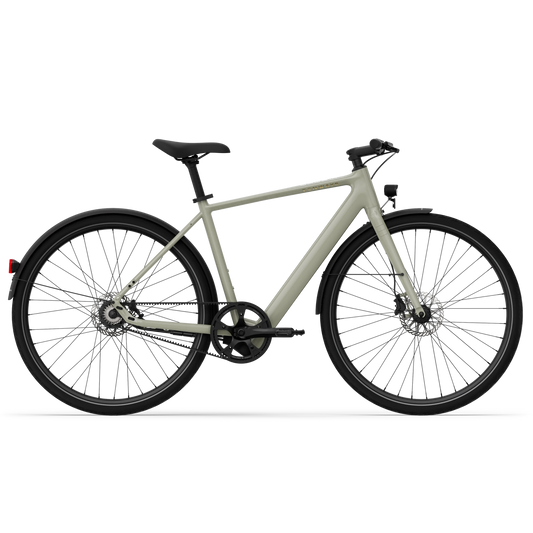Tires are key to an e-bike's comfort, stability, and performance, and commuter e-bikes are no exception. Contrary to the belief that all commuter bikes use similar tires, there’s actually a range of options designed to meet different needs. Whether you're navigating smooth city streets or rougher urban terrains, tire width can significantly impact your ride quality, from comfort to efficiency. Let’s explore how the tire choices on our commuter e-bikes can enhance your daily commute.
Comfort vs. efficiency
Tire width significantly affects both comfort and efficiency. Wider tires provide more stability and grip, especially on uneven or rough surfaces, offering a more cushioned ride. This makes them ideal for navigating bumpy city streets or imperfect pavements, where comfort and control are key. For instance, the CGO009 comes with moderately wide tires (55mm), striking a balance between stability and smooth performance, making it suitable for diverse urban terrains.
On the other hand, slightly narrower tires, like those on the CGO600 and CGO600 Pro, offer lower rolling resistance, which enhances efficiency on smoother, flatter roads. These models are designed for riders seeking a more agile ride and easy handling in well-maintained urban environments.

Terrain
Tire width also affects how your bike handles different types of terrain. Wider tires provide better traction due to their larger surface area in contact with the road. This increased contact helps correct minor instabilities, making bikes like the AGO T and CGO009 perform better on cobblestones and uneven urban terrain. Paired with their stronger torque, they can also handle slopes, offering a more comfortable ride on tricky surfaces.
In contrast, narrower tires are designed for smoother, flatter roads. They transfer more feedback from the surface to the rider, meaning you'll feel the road's bumps more acutely. However, if your commute takes place on well-maintained streets or bike lanes, the CGO600 and CGO600 Pro provide an efficient and fast ride without the extra weight or drag of wider tires.

Puncture resistance
Puncture resistance is another factor tied to tire width. Wider tires can run at lower pressures, distributing weight over a larger surface area. This reduces the likelihood of punctures, bringing peace of mind for riders who encounter challenging urban conditions regularly. Narrower tires are typically more prone to punctures because they run at higher pressures and have less surface contact with the ground.
Weather
Commuting by bike means you're often at the mercy of the elements, so tire choice becomes even more important in unpredictable weather. Wider tires offer increased traction in wet or slippery conditions, enhancing stability and reducing the risk of accidents. This feature makes them a good choice for safety-conscious commuters who ride year-round in various weather conditions.
If you live in a region with a more predictable climate, or if you're a seasonal rider, narrower tires might suffice. The CGO600 and CGO600 Pro, with their narrow tires, offer a smoother ride in dry conditions, making them an excellent choice for commuters in warmer or more consistent climates.

Conclusion
Whether you're commuting on well-maintained streets or braving uneven city paths, understanding how tire width impacts your ride can help you find the best e-bike for your needs. Wider tires, like those found on the AGO X, AGO T, and CGO009, offer more grip, cushioning, and puncture resistance, making them ideal for riders navigating rougher urban roads or riding in various weather conditions year-round. On the other hand, narrower tires, like those on the lightweight series, are suited for smoother terrains and prioritize nimble handling and efficiency.






























